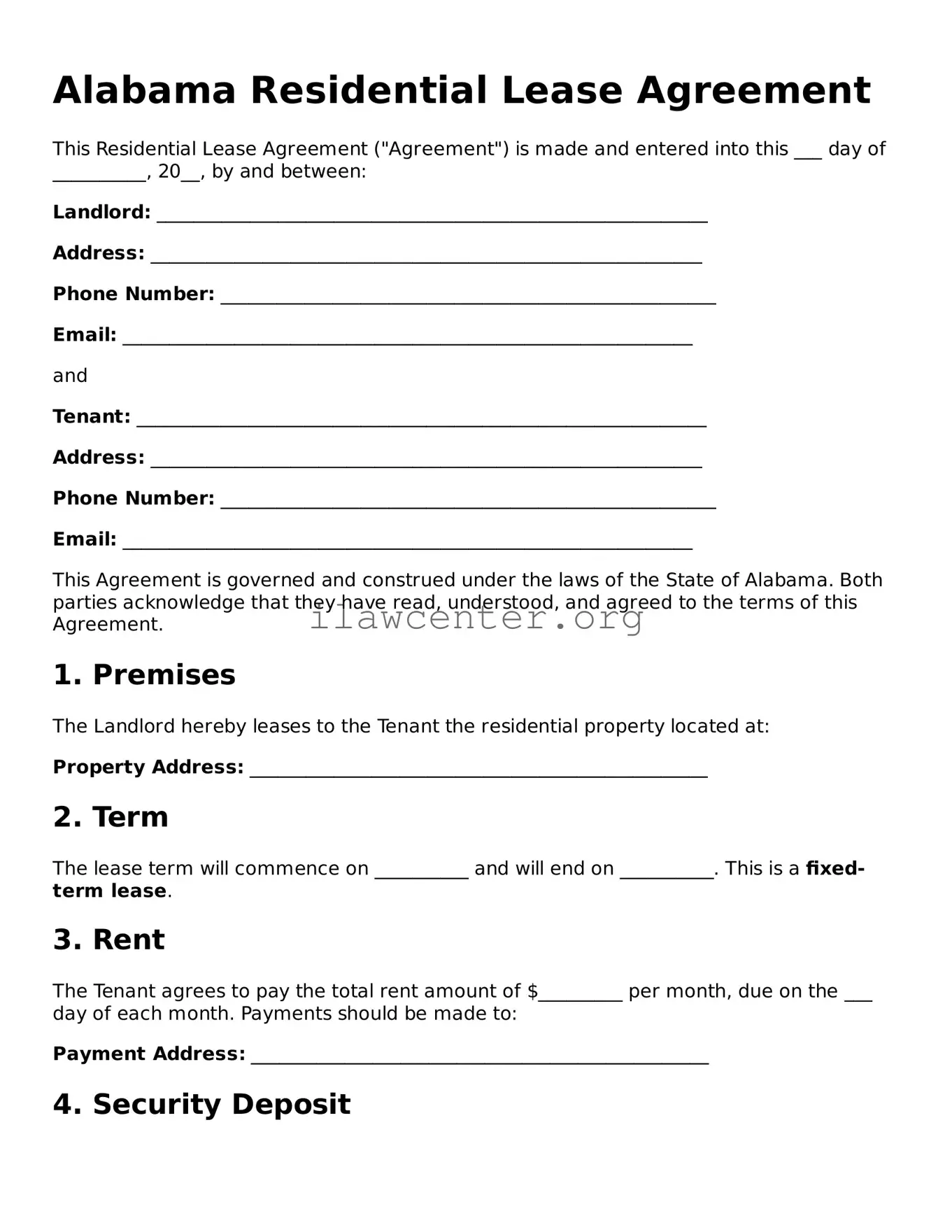What is an Alabama Residential Lease Agreement?
The Alabama Residential Lease Agreement is a legal document that outlines the terms and conditions under which a rental property is leased by a landlord to a tenant. This document details essential aspects such as the rental amount, duration of the lease, property responsibilities, and rights of both parties involved in the lease arrangement.
What are the essential components of this lease agreement?
Key components of an Alabama Residential Lease Agreement include the names of the landlord and tenant, the property address, lease duration (whether it's month-to-month or a fixed term), the rent amount, security deposit details, utility responsibilities, and the terms regarding maintenance and repairs. It is also important to include specific rules regarding the use of the property, such as pet policies and restrictions on alterations.
How long is the term of the lease?
The term of the lease can vary. In Alabama, residential leases are often issued as either month-to-month agreements or fixed-term leases that can run for six months, one year, or longer. The agreed duration should be clearly stated in the lease document to avoid any confusion.
Can a landlord increase the rent before the lease term ends?
Generally, if the lease is a fixed-term agreement, the landlord cannot increase the rent until the lease expires. However, for month-to-month leases, landlords typically can raise rent with adequate notice, usually 30 days in Alabama. It's crucial for tenants to review their lease for specific terms regarding rent increases.
What is a security deposit, and how is it handled?
A security deposit is an amount of money paid by the tenant to the landlord to cover potential damages or unpaid rent. In Alabama, the security deposit cannot exceed one month's rent for a year-long lease. Upon lease termination, the landlord must return the deposit within 60 days, minus any legitimate deductions for repairs or cleaning.
Are there any required disclosures landlords must provide?
Yes, Alabama law requires landlords to provide certain disclosures. These may include information about lead-based paint hazards for properties built before 1978, as well as any known issues related to the property, such as mold or unsafe conditions. Tenants should ensure that these disclosures are included in the lease agreement.
What happens if the tenant breaks the lease early?
If a tenant breaks the lease early, they may be held responsible for paying the remaining rent due under the lease terms. Alabama law allows landlords to pursue damages resulting from the early termination, which may include legal costs and lost rent until the property is re-rented. It’s advisable for tenants to review the lease for any clauses related to early termination and potential penalties.
Can tenants make alterations to the property?
Generally, tenants must obtain written permission from the landlord before making any alterations to the rental property. This includes painting walls, installing shelves, or making significant modifications. Any unauthorized changes could lead to deductions from the security deposit upon move-out.
What are the consequences of not adhering to the lease terms?
Failure to adhere to the lease terms can lead to various consequences. If tenants violate lease provisions, such as not paying rent on time or causing damage, landlords may issue a notice to comply or may initiate eviction proceedings. Conversely, landlords must also follow the terms outlined in the lease and cannot unlawfully evict a tenant without due process.
How can disputes between landlords and tenants be resolved?
Disputes between landlords and tenants may be resolved through communication and negotiation. If direct discussions fail, alternative methods like mediation can be considered. In some cases, disputes may escalate to legal action, requiring both parties to present their cases in court. It's essential for both landlords and tenants to keep records of all communications and agreements related to their lease.
